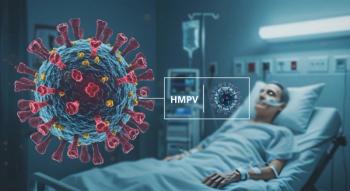
Understanding of Mutations Influences Treatment for Patients With Waldenstrom Macroglobulinemia
Biology and disease type may help determine which therapeutic options could work best for patients with Waldenstrom macroglobulinemia.
Treating Waldenstrom macroglobulinemia involves a unique set of challenges due to the disease’s characteristics, according to Prashant Kapoor, MD, of the Mayo Clinic, who discussed different front-line treatment options during a presentation at the tenth Annual Meeting of the Society of Hematologic Oncology.
Kapoor said that Waldenstrom macroglobulinemia constantly mutates as it becomes active. This results in the loss of long-arm chromosome 6 in almost half of all patients. Understanding the type of mutation may predict patient outcomes and which therapeutic option works best, according to Kapoor.
“The primary genomic abnormalities that were identified in waldenstrom macroglobulinemia through next generation sequencing studies were the MYD88 mutations…as well as CXCR4 mutations,” Kapoor said in the presentation.
Although the MYD88 mutation was found to affect most patients, the CXCR4 mutations only affected about 40% of patients.
MYD88 is an adaptive, constitutionally active protein in patients with Waldenstrom macroglobulinemia. This protein can trigger a series of biological pathways that can eventually result in an overproduction of Waldenstrom macroglobulinemia cells.
CXCR4 mutations affect fewer than half of patients and can cause symptoms such as increased bone marrow disease burden. This mutation can also cause hypo viscosity syndrome and increased immunoglobulin M (IgM) levels.
“IgM protein that is circulating can do a lot of funky things,” Kapoor said in his presentation.
This protein may be responsible for symptoms of neuropathy in up to 20% of all patients with cancer, according to Kapoor. He added that both the MYD88 and CXCR4 mutations can lead to drug resistance, which can negatively impact treatment options. As such, the treatment landscape for Waldenstrom macroglobulinemia is diverse and changing.
Fixed duration therapy is only administered for a short amount of time. Rituximab is a commonly used drug, but it may only offer progression-free survival (PFS) for 18 months. The addition of bendamustine could possibly increase median PFS 4-fold, but it is not well-tolerated in all patients, according to Kapoor.
However, he noted that a recent multicenter analysis found 11% of patients whose disease progressed within 2 years after taking bendamustine and rituximab had more poor outcomes.
Ibrutinib and zanubrutinib are FDA-approved Bruton's tyrosine kinase (BTK) inhibitors. These drugs can treat patients with Waldenstrom macroglobulinemia but must be taken over their entire lifetime.
Kapoor discussed a study that found ibrutinib could provide partial remission to certain patients with the MYD88 mutation. He said that adding rituximab would benefit patients with wild type MYD88 or those with the CXCR4 mutation.
Zanubrutinib has a lower toxic profile than ibrutinib and caused 50% less hypertension. Trial drug pirtobrutinib was even more safe, and venetoclax could be a good option for patients, according to Kapoor.
Waldenstrom macroglobulinemia is a rare type of cancer that affects the white blood cells. At diagnosis, Kapoor said that approximately 25% of cases are in the smoldering stage. Additionally, approximately 10% to 15% of patients with Waldenstrom macroglobulinemia can show symptoms of hypoviscosity, or thickened blood, as well as symptoms such as headache and impaired vision. Fatigue, constitutional symptoms, arthralgias, and Reynaud’s phenomenon are other symptoms of the cancer.
Although continuous therapy is a viable treatment option, Kapoor said that “All roads lead to fixed duration therapy…It is useful in every scenario, especially in patients in whom fast response is required, such as patients with hypoviscosity syndrome.”
Reference
Kapoor, Prashant. Using Biology to Determine Type and Duration of Treatment in Waldenstrom Macroglobulinemia. Society of Hematologic Oncology. September 30, 2022. Accessed on September 30, 2022.
Newsletter
Stay informed on drug updates, treatment guidelines, and pharmacy practice trends—subscribe to Pharmacy Times for weekly clinical insights.


















































































































































































































